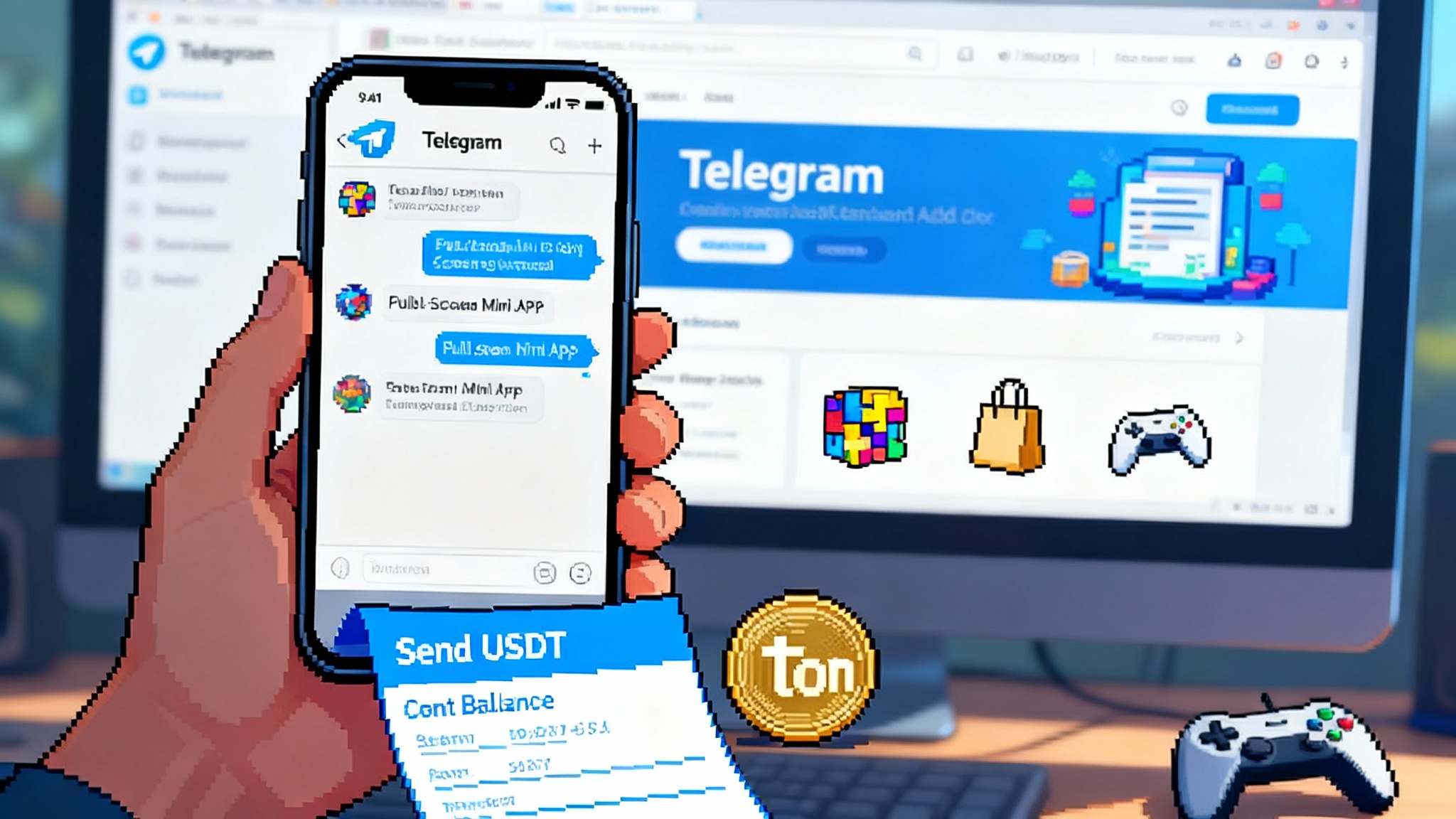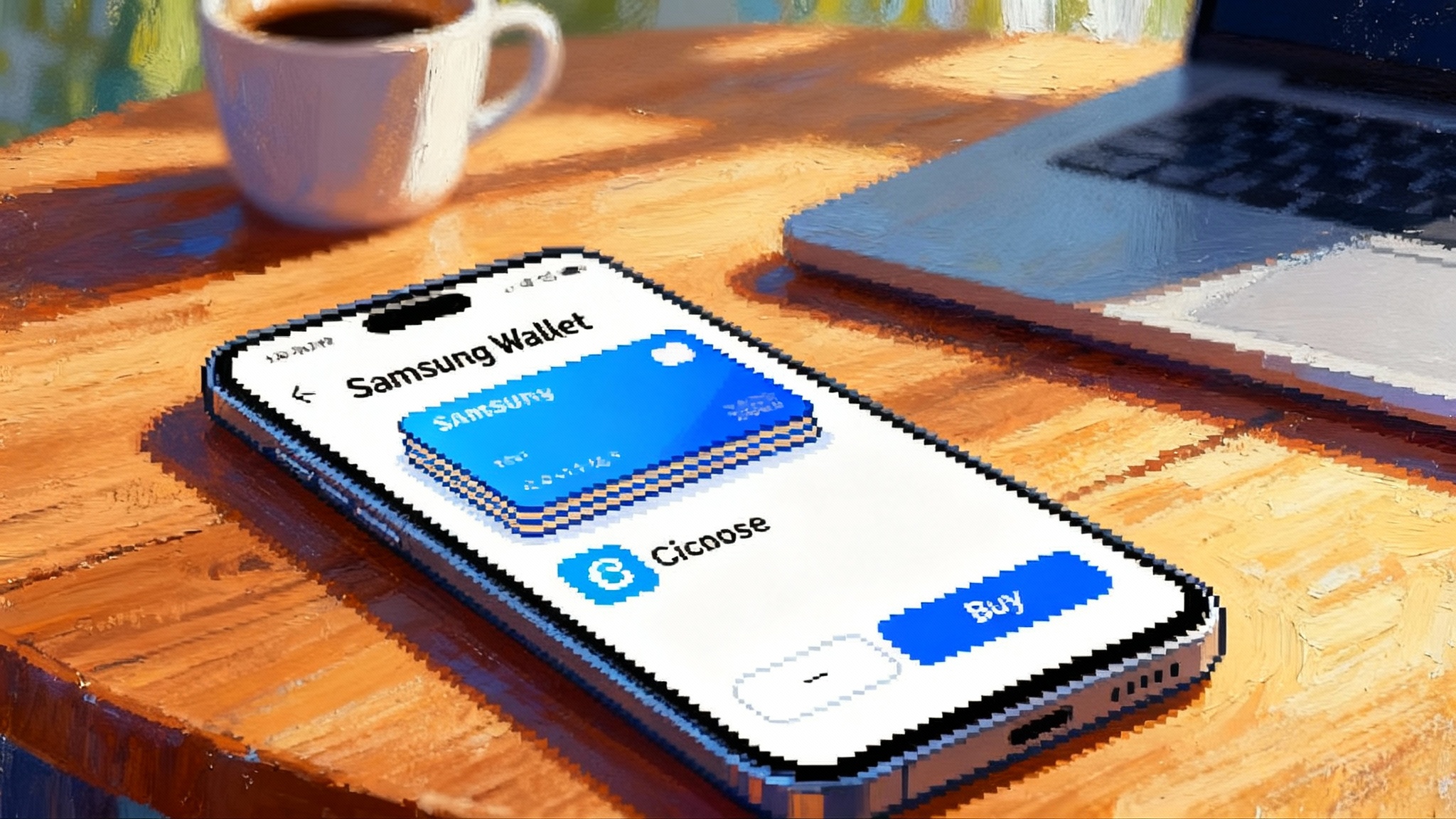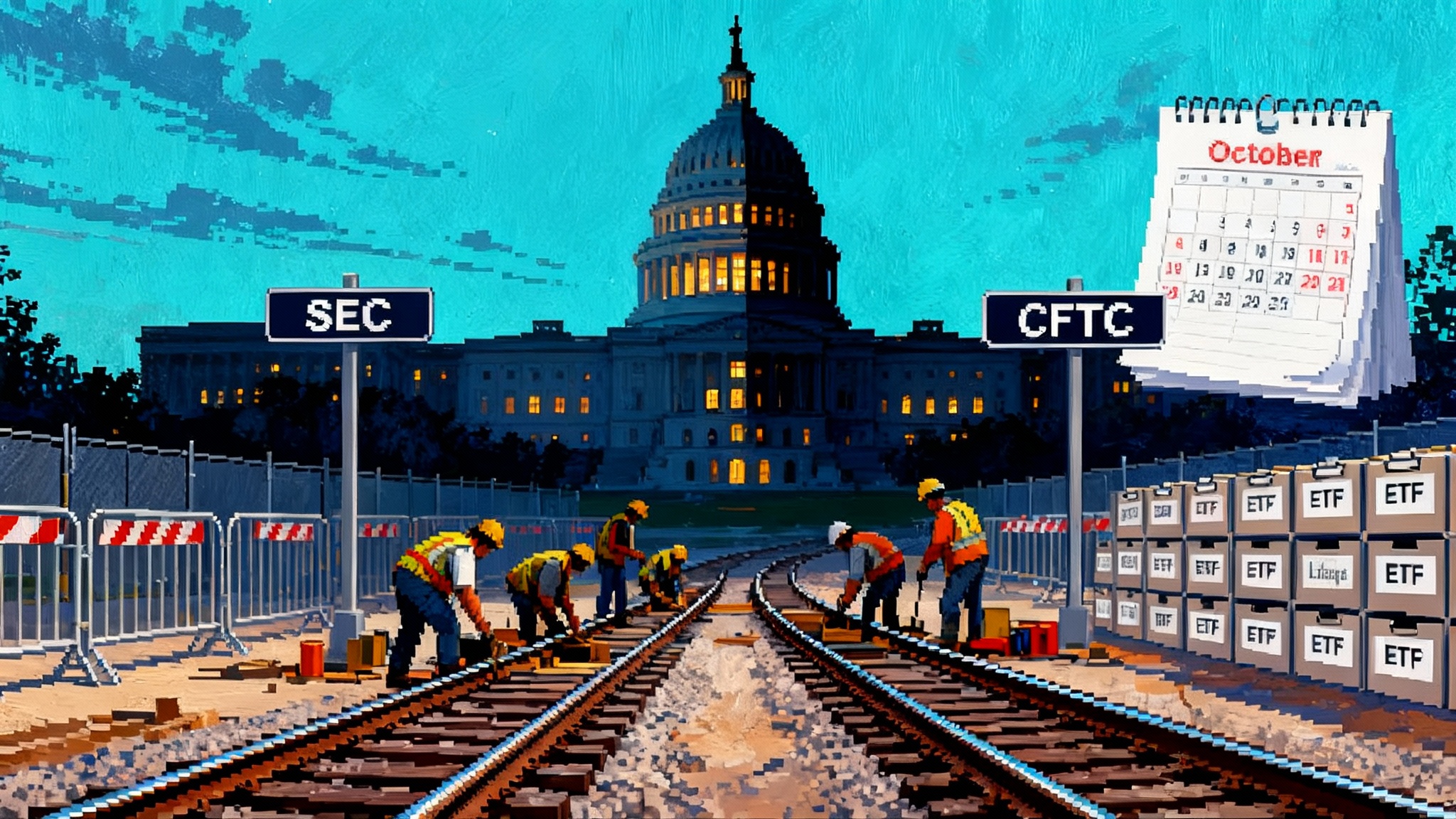Telegram’s TON Lock-in and U.S. Wallet Create a Real Onramp
Telegram made TON the exclusive chain for Mini Apps and shipped a self-custodial wallet to U.S. users. That pairing ties distribution to payments and gives crypto its most credible mobile onramp yet.

The moment that turns chats into checkout
Telegram just did what every crypto team has dreamed about since 2017. It tied distribution to transactions. In January 2025 the TON Foundation announced that TON would become the exclusive blockchain for Telegram’s Mini Apps, with a migration deadline that forced the ecosystem to converge on one standard for wallets, payments, and tokenized assets. That single decision unlocked a real funnel from audience to on-chain action inside one of the world’s biggest consumer apps. TON’s exclusive Mini Apps partnership formalized it.
Then in July 2025, Telegram began rolling out the built-in TON wallet to users in the United States. A self-custodial wallet appears right where people already message friends, follow creators, and discover games. The wallet supports stablecoin transfers and integrates on and off ramps through partners like MoonPay, which means dollars can move to and from Telegram with far less friction than a typical crypto flow. CNBC’s report on the U.S. rollout captured the milestone.
The result is a credible path to mainstream web3 usage in the near term, not in theory but in distribution. It resembles what made WeChat powerful in China: a surface where messaging, mini programs, and payments reinforce each other. Only this time the settlement layer is a public blockchain.
What exactly changed in 2025
- TON is the only blockchain for Telegram Mini Apps. If your mini app touches a blockchain in any way, it must use TON Connect for wallet authorization and TON for transactions. Telegram set a February 21, 2025 cutoff for migration.
- Toncoin is the only cryptocurrency for non-fiat platform payments. Stars redemptions and ad invoices settle in Toncoin. Payouts to mini app developers and channel owners are denominated in Toncoin.
- The Mini Apps runtime matured. Full-screen experiences, better input and performance features, and home screen shortcuts made games, commerce, and tools feel like native apps without a store download.
- The U.S. wallet rollout closed a major gap. It enables self custody for Americans, plus fiat bridges through licensed partners.
Put simply, the pipes for on-chain payment, ad spend, and rewards are now aligned with the feed where users already spend time.
Why this matters more than yet another wallet
Crypto distribution has always faced a chicken and egg problem. Users will not install a crypto wallet until a product gives them a reason. Builders cannot ship a consumer product until users have a wallet. On mobile, this deadlock is compounded by app store rules and the pain of swapping networks, seed phrases, and bridges.
Telegram breaks the loop in three ways:
-
The wallet is preinstalled at the point of intent. It sits inside the chat where a friend shares a game, where a creator drops a gated collectible, or where a local store posts a promotion. No separate download, no browser extension, no context switch.
-
Mini Apps are web-based surfaces with native-like affordances. A game can open in full screen, request motion sensors, and save progress. A marketplace can render dynamic catalogs, handle subscriptions through Stars, and trigger on-chain payouts behind the scenes. There is no ten-step KYC hurdle to try a free level, and the conversion to a custodial or self-custodial flow can happen when value appears.
-
Stablecoins are the default unit of account. USDT on TON launched in 2024 and has become the practical rail for peer-to-peer transfers and micro payouts. If a channel sends 3 dollars in rewards to viewers or a user tips a creator 2 dollars, that can settle in seconds without volatile exposure. For broader context on policy and adoption, see our stablecoins go mainstream analysis.
When you combine those pieces, the Telegram funnel starts to look like the most realistic onramp crypto has right now. People discover, try, pay, and withdraw inside one app.
The new loop: ads fund users who pay in app
Telegram’s ad platform pays channel owners a share of revenue in Toncoin. Creators can cash out or reinvest those coins to promote posts and grow their audience. Developers can buy traffic for Mini Apps, convert users with a low-friction wallet flow, and send rewards or coupons back to the feed to reengage. It is a closed loop where acquisition, conversion, and retention all live inside the same surfaces.
For example, imagine a puzzle game that targets readers of a popular tech channel. The developer buys targeted impressions, attracts players into a full-screen mini app, and lets them try a free level. Finishing the level unlocks a 50 cent stablecoin bonus and a premium pack redeemable for 2 dollars. Players who accept create a wallet with two taps, receive USDT, and can spend it on a discounted subscription inside the mini app or withdraw later. The spend funds more ads that bring in similar users. The loop is measurable, fast, and compounding.
What to watch next
- Developer migration velocity. The exclusivity decision forced a choice. Watch how quickly major Mini Apps and games move from other chains or off-chain backends to TON. The early pace from tap-to-earn hits like Notcoin and newer titles will set expectations for the rest of 2025.
- USDT and fiat bridges. The wallet’s U.S. rollout solves one regulatory hurdle. The practical question is on- and off-ramp coverage by state, payment method breadth, and fees. The smoother the MoonPay or local alternatives perform inside Telegram, the more real-world commerce will happen in Mini Apps.
- Channel ad payouts at scale. Payouts in Toncoin need to be predictable, timely, and cheap to move. If creators can pay collaborators or vendors in USDT without leaving the app, the ad economy will pull more participants into the on-chain loop.
- Interop and bridges. TON integrated with cross-chain protocols to reduce stranded liquidity. What matters now is whether USDT moves seamlessly between the ecosystems where users already hold balances. For a broader lens on cross-ecosystem design, see our Ethereum interop moment.
- App store friction. Mini Apps run as web experiences, which avoids many restrictions, but policies can still change. Watch for any policy shifts from Apple or Google that affect deep linking or payments.
Who wins first
- Telegram and TON Foundation. They capture the two rare assets crypto lacks: distribution and a default wallet. Toncoin becomes the grease for the internal economy. The exclusivity deal ends fragmentation and gives the network a clear growth narrative.
- Mini App developers who migrate early. Migration grants, promotional placement, and less competition in search will advantage those who make the jump before the crowd. Early movers will claim usernames, channels, and user habits that are hard to dislodge later.
- Stablecoin issuers and payment partners. USDT on TON benefits from chat-driven flows like tipping, micro rewards, and small purchases. On-ramp providers like MoonPay get transaction volume from everyday actions instead of speculative bursts.
- Gaming studios with free-to-try funnels. Tap and try inside chat is powerful for genres from idle clickers to real-time multiplayer. Free entry, low-cost boosts, and peer referrals re-create the viral loops that mobile had before privacy changes.
- Channel owners and creators. A direct revenue share in Toncoin gives channels with real engagement a reason to post more and to partner with Mini Apps. The more they reinvest into ads, the stronger the discovery engine becomes.
Who feels pressure
- Cross-chain wallet connectors and generalized middleware. TON Connect becoming the standard inside Telegram reduces demand for multi-chain connectors in that environment. If your product’s value was abstracting chains inside Telegram, this decision compresses your scope.
- Competing consumer onramps. Exchanges and neobanks that relied on first-wallet relationships in the U.S. may see reduced top of funnel as Telegram turns daily chats into the first crypto experience. Mobile distribution is shifting too, as seen when Samsung and Coinbase flip crypto on for tens of millions of users.
- Projects that refuse to migrate. Apps that stay off TON will lose Mini Apps distribution. Users will follow the path of least resistance, and channels will promote what they can monetize.
- Chains pitching social distribution. Without a comparable messenger surface, other ecosystems will struggle to match Telegram’s conversion from content to payment.
The risks you should take seriously
- Platform lock-in. Tying your app to Telegram brings reach and speed, but it concentrates platform risk. Telegram can change policies, prioritize new formats, or adjust revenue shares. Mitigate by keeping business logic modular and preserving non-Telegram user acquisition channels.
- Compliance in the United States. The U.S. wallet is self custodial and relies on licensed partners for fiat. That structure reduces risk for Telegram, but it passes operational complexity to partners and developers. If state-level rules change or a partner pauses service, user flows can break. Build fallbacks, keep balances in stablecoins with strong liquidity, and plan for identity checks where needed.
- App store policy shifts. Mini Apps are web based and do not use in-app purchase rails for crypto payments. If linking rules or browser capabilities change, some deep integrations could be affected. Keep an alternate onboarding plan and be ready to use Stars or gift codes as contingency.
- Spam and scams. A larger surface invites fraud. Standardize on TON Connect, clear signing prompts, and human-readable transaction summaries. Add risk controls such as spend limits, withdrawal delays, and device checks for new users.
- Chain capacity and outages. If a viral game or a high-profile airdrop spikes throughput, you need queuing and graceful degradation. Cache reads, batch writes, and design first-session flows that do not require a transaction.
How to position your team now
- Ship on TON first. If Telegram is your main distribution, build for TON rather than building for another chain and bridging later. Use TON Connect and plan your user journey around the wallet that users already have in chat.
- Treat USDT as your default payment rail. Price items in dollars, settle in USDT, and offer Toncoin discounts for power users who stay inside the ecosystem. Let users top up in app through partners and withdraw to exchanges if they want to.
- Design for zero-to-one session economics. First session should prove value with no purchase required. Gate your on-chain action behind a clear win: beat a level, invite a friend, or complete a tutorial. Then offer a small dollar value reward that unlocks a premium feature or a discounted subscription.
- Close the loop with channels and ads. Create a channel for your app, post highlights, and promote posts to lookalike audiences of your engaged users. Use ad spend to drive to a mini app challenge that yields a reward, then nurture those users with weekly events.
- Instrument everything. Track cost per install, cost per activated wallet, cost per first on-chain action, and lifetime value by cohort. Attribute revenue to channels and creatives so you can recycle Toncoin revenues into the best performing campaigns.
- Localize for the U.S. early. The U.S. wallet rollout means you can test compliance-ready flows now. Start with states that your fiat partners cover best, and make sure tax receipts and refunds work. Offer customer support hours in U.S. time zones.
- Build interoperable backends. Even if you are all in on TON, keep your core game logic or commerce catalog chain agnostic where possible. Use abstraction layers so you can port if needed. Store user identities in a portable schema that maps to Telegram accounts and external wallets.
- Embrace trust minimization without user friction. Use self custody where possible, but offer recovery options such as split key backups or social recovery. Show clear value before you ask for a signature, and always explain what a transaction does in plain language.
A practical checklist for founders
- Pick a go-to-market channel inside Telegram and own it. Post daily, run polls, recruit moderators, and partner with adjacent channels.
- Prototype your mini app with an offline mode. Prove your loop before you wire payments. Add on-chain actions where they obviously help.
- Implement TON Connect, test on slow networks, and design for one-handed use.
- Default to USDT pricing, support Toncoin discounts, and show a running dollar subtotal.
- Integrate a reliable on ramp. If MoonPay is not available in a user’s state, present an alternative path or a waitlist.
- Set daily ad budgets tied to payback windows. Reinvest a share of Toncoin earnings into the next day’s spend.
- Prepare compliance playbooks for refunds, chargebacks where fiat partners are involved, and suspicious activity reports if you operate a custodial balance.
The bottom line
Telegram’s decision to make TON the exclusive chain for Mini Apps, paired with the wallet’s U.S. launch, is not just another integration. It rewires how distribution meets payments. Creators get paid where they post. Users try products where they chat. Developers earn revenue where they acquire. That is the formula that finally gives crypto a mainstream path on mobile. The window is open now. If you are a builder, step through it while the traffic is light and the rewards are high.








